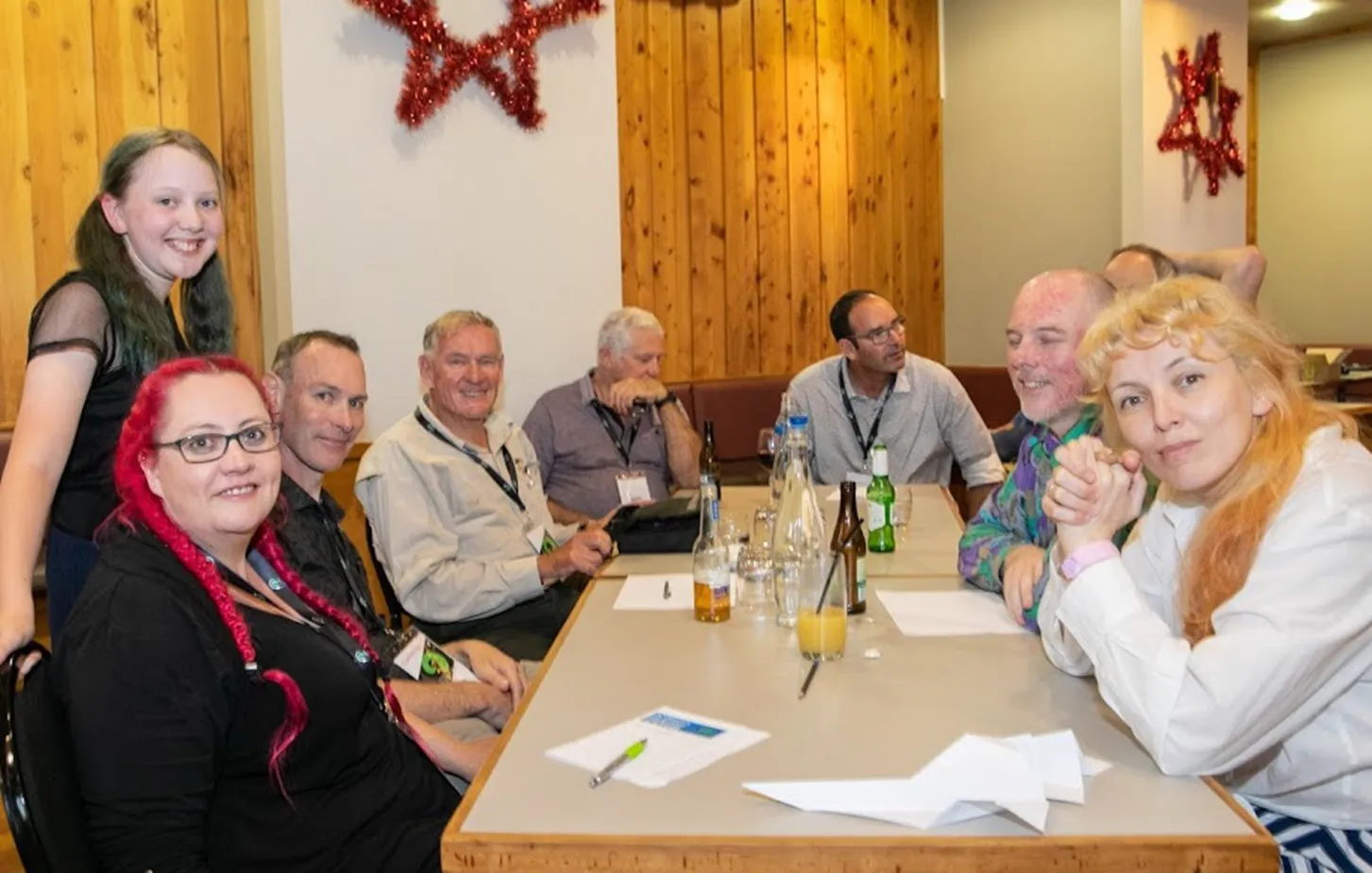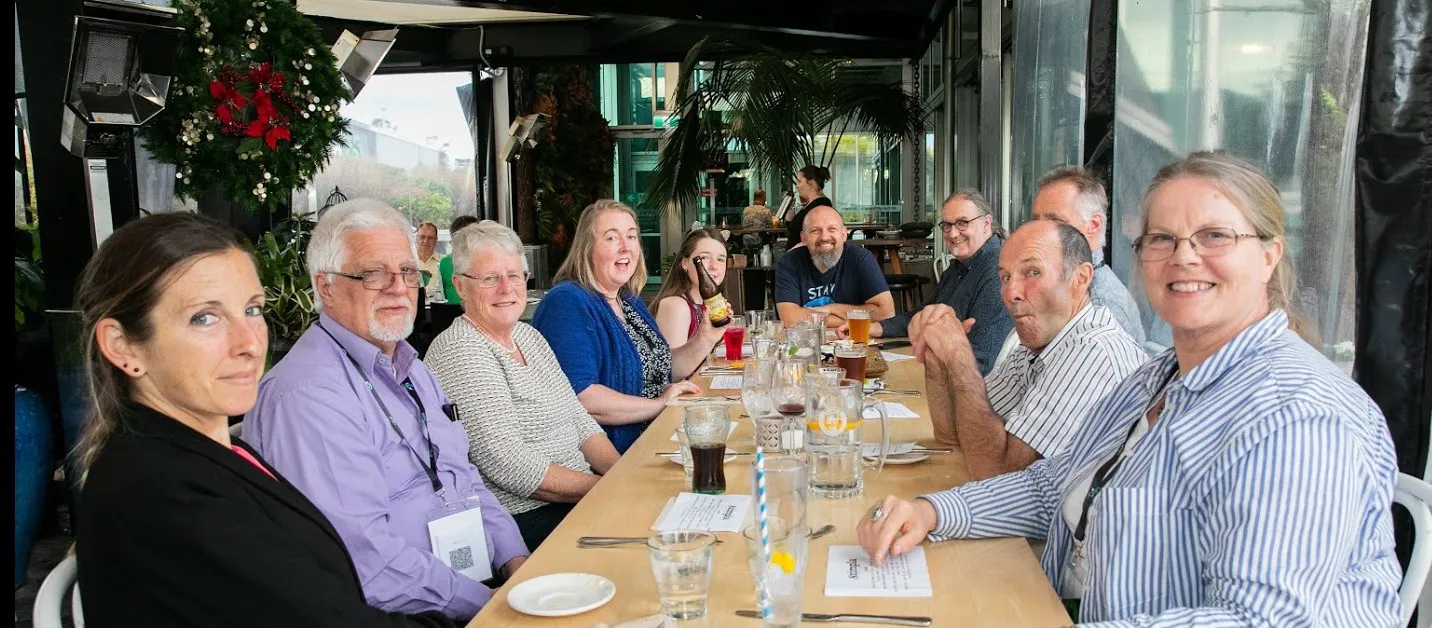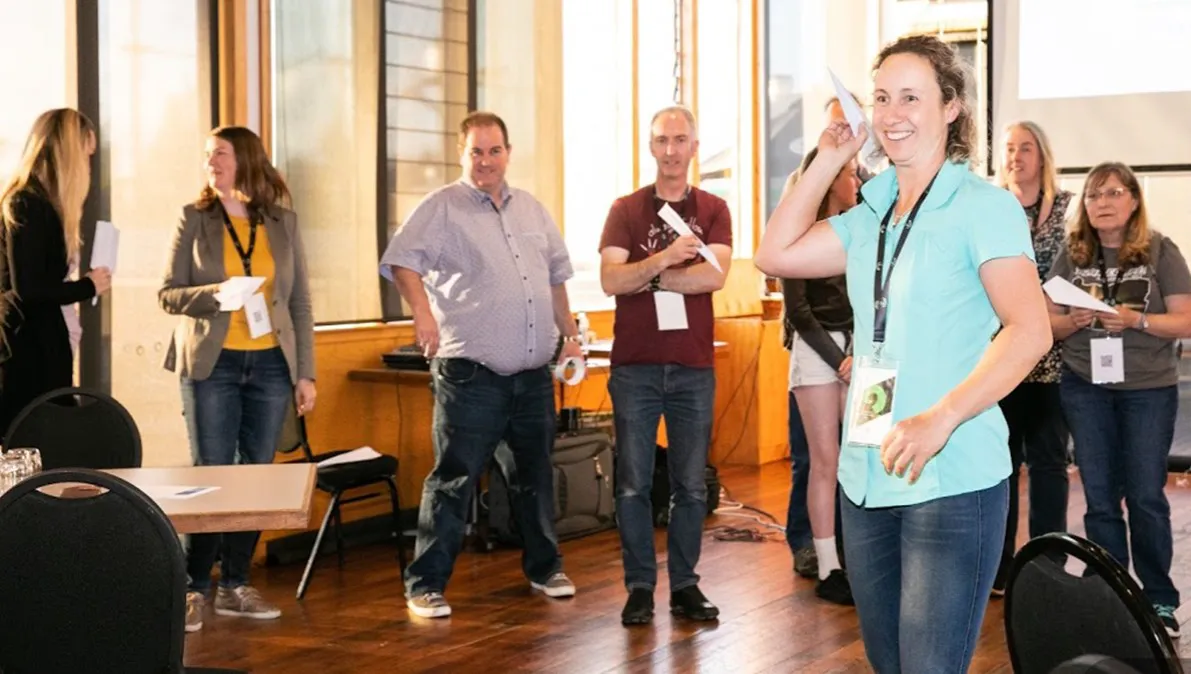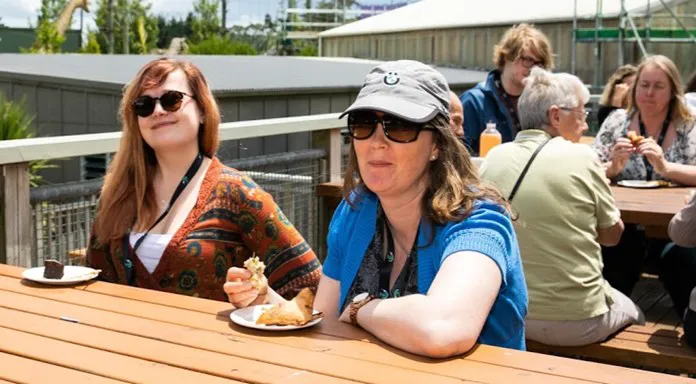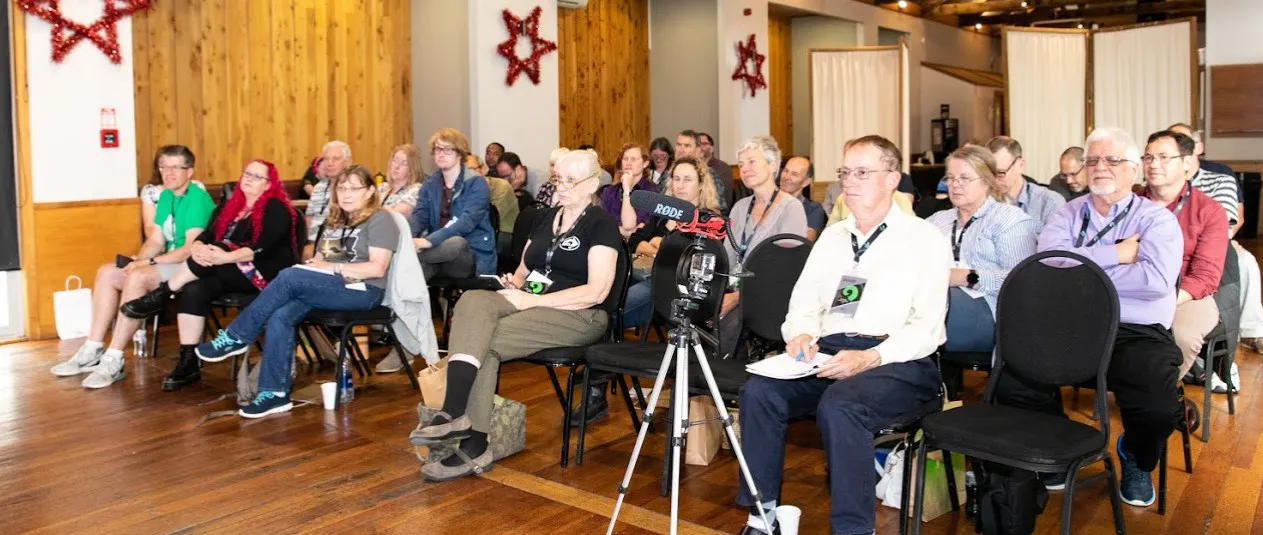NZ Skeptics Conference 2018
- 1st February 2019
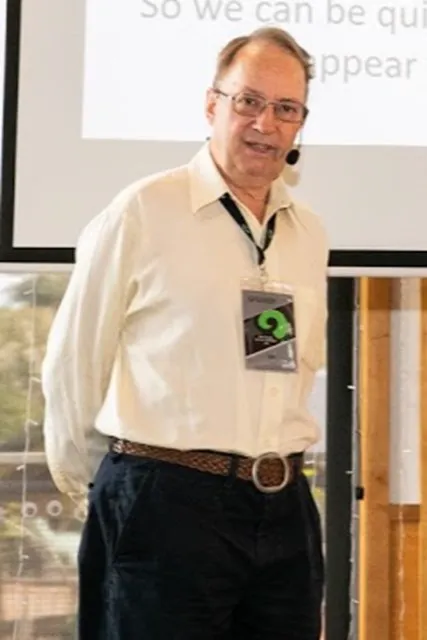
Ian Bryce
How to be a pseudoscience investigator
I an Bryce is a dedicated skeptic. He has been investigating claims for the Australian skeptics for some years.
One claim requiring rigorous testing by the Aussie Skeptics involved a wine card which was supposed to have some kind of effect on the flavour of wine, so much so that it would render cheap cask wine into a pleasant drinkable product. To see if the Premium Wine Card did what it claimed (check premiumwinecard.com – they are still at it), they came up with a double-blind test, which in the end proved once and for all, that science plus alcohol can equal a fun night out. The product on the other hand didn’t seem to do a thing except the predictable; lighten the wallet of the purchaser.
Other products tested included an ‘Infinite energy machine’, a ‘Double parity machine’ and Aquapol, a product that was supposed to mitigate rising damp. All turned out to be scams, and it was Ian’s scientific background that helped to prove this beyond a shadow of a doubt.
Ian has also not been shy about stirring up controversy in order to educate the public. One thing that got him into a wee bit of trouble was hanging out at Mind Body Spirit (Wallet) gatherings, listening to people talking about this or that bit of plastic nonsense that doesn’t do anything, then debunking it to the captive audience, much to the chagrin of the salesperson. He did get kicked out in the end, but not after changing a few minds in the process.
Other products tested were the Lif3 Cellsaf Radichip which is supposed to protect you from mobile phone radiation. Another example of inventing a product to protect you from a problem that doesn’t exist.
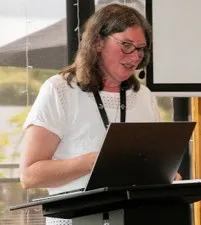
Justine Kingsbury
How to think critically
Justine started by highlighting the fact that we are bombarded with information. Too much information. It is therefore important to be able to filter that information, know when to discard, when to file away and when to lock on to the key points.
One big blocker in our ability to effectively filter that information is our bias. For example, if you liked John Key, would that sway you towards his position in the NZ flag debate? If you disliked his political views, would you lean the other way? What if he was against a change in flag, would that have changed your mind? This example is a way of reminding us that authority figures can sway our thinking one way or the other depending on our allegiances.
We were reminded that in an emergency critical thinking may not be the best course. Our lizard brain reactions might be better. Deciding on cycle lanes and roading policy should definitely involve critical thinking, weighing up of evidence, community consultation, research and so on, but then watching a 6-year-old step out in the road requires an immediate response.
Other points covered included the logical fallacy of cherry-picking evidence. Looking at any graph of data you’ll find spikes and troughs, but also an overall trend. It’s therefore disingenuous to look at a small chunk of that data and extrapolate a downward or neutral trend while ignoring the overall direction of the data. I think it’s like using the weather as your explanation for what climate is doing. Weather will meander, in fact it’s going to mean-der more as climate change worsens, but climate describes the temperature and weather trends over time, like a man walking his dog, the weather meanders around while the climate walks on.
Justine also talked of the importance to put the time in to discover the motives of experts (are they going to profit from convincing you of a course of action?). This made me think of terms such as ‘Big Pharma’ can cast doubt on science based medicine, so as skeptics we need to throw the term ‘Big Supplement’ in the mix to reflect the fact that people selling supplements also have motives behind the messages they put out.
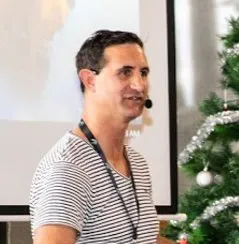
Dan Hikuroa
How to view the natural world
Dan approached his talk a bit differently from the other speakers, forgoing the PowerPoint and embracing the whiteboard. Reaching out to the crowd he asked for words we associated with ‘Taniwha’. Monster, myth, harbour mouth, moods, dangerous, lake breather were some of the audience suggestions.
Dan explained that to Maori, Taniwha were guardians. The stories told about them encoded local knowledge about natural phenomenon, like under currents, lahars, floods and so on, that helped protect the people who heeded them.
He spoke of a roading project that NZTA were doing where they consulted with local Maori and because of their advice, diverted the motorway, ostensibly because of a Taniwha. Not twelve months later, there was a major flood that ripped through the path of the original route, and the new motorway remained unscathed.
Mātauranga means Maori knowledge. It’s about observing and using those observations to predict the habits of fish or the movements of the tides. There is incidentally a detailed timetable you can learn about at Te Papa involving fishing days and the stars that is fascinating in its detail, down to species type, habitat to fish, time of day and so on.
So Taniwha stories were also a way to highlight areas to avoid, where swimming was dangerous, or where seasonal flooding was likely to threaten homes.
It was clear that Dan was a passionate advocate for continuing to value and collect Mātauranga. He wants to work on a national catalogue of Taniwha and mātauranga to help predict and protect the future. I agree this could be fascinating, as a national database could uncover patterns in understanding that relate to predictable events around the country, that were identified in isolation by the local people. However, Dan explained that because Taniwha were and are thought of as local guardians, the very idea of creating a national database of them is anathema to some people. For them, taniwha can only make sense in a local context, and their faith or spiritual connection to them is preventing them from sharing more.
From a skeptic (and white European female) perspective, I was intrigued by this talk. As each Taniwha example was examined, the evidence seemed to point to a wonderful history of observation of the natural world, its plants, animals, the land, the water. Citizen science through the ages. However, I kept hearing the words “confirmation bias” in the back of my mind. Were there examples out there that didn’t fit the pattern Dan was presenting of Maori knowledge protecting life, land and property? Surely over the years, the position of rips could have changed, water systems may have dried up which once caused havoc, or in other places flooding may have worsened without the mythology catching up to explain it?
I couldn’t help but think of other ideologies or belief systems, where ideas founded on an observation of nature lead sadly to harm (emotional, physical, financial) due to people embracing the metaphor and throwing away the observations of the natural world that inspired it. Human sacrifices have been made in the past to appease the gods to bring a fruitful harvest, in some cases humans or animals were thrown into volcanoes to calm down the beast within.
As an example of an unnecessary waste of money, take Hong Kong’s dragon buildings. Long ago people will have observed the mist rising from the sea, or the wind direction moving clouds in the sky. As time went by, stories of mighty dragons making a daily journey from the mountains to the sea to feed and bathe evolved. In these modern times, the dragons are remembered and catered to by the provision of ‘dragon holes’ in multi-story buildings. These holes allow the dragons to make their way from the ocean to the mountains and back unimpeded. These amazing feats of engineering are spectacular, but given dragons don’t actually exist, seem like a monumental waste of money to me.
So my skeptic view of the talk was yes, we should hear and treasure those taniwha stories, because in this modern world we have lost focus on our deep connection with the environment, and we must not ignore the environmental challenges we face if we are to survive in future. But also, we should recognize and separate the knowledge from the metaphor, and not fall into the situation where we are making harmful decisions (emotional, physical or financial) based solely on the idea that sacred guardians or monsters exist.
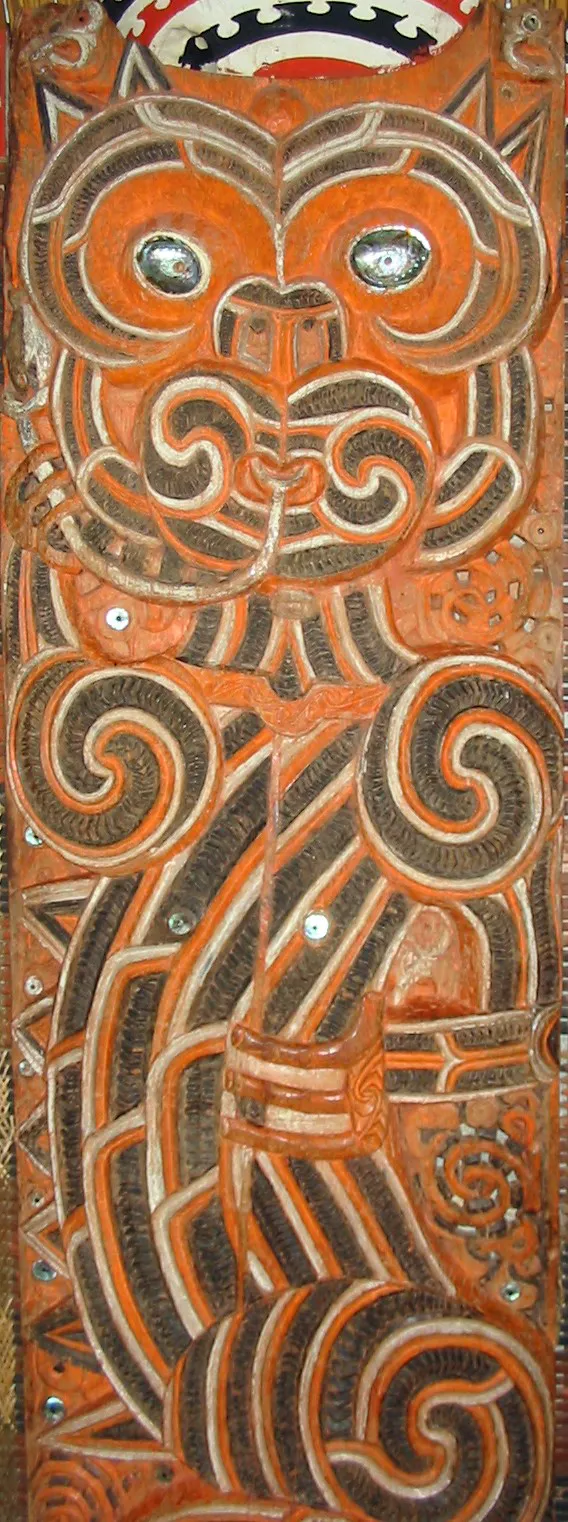
Ureia, guardian taniwha (sea creature), depicted in a carved poupou (house post) from the interior of Hotunui, a carved meeting house of the Ngati Maru people, Thames, New Zealand

Kathleen Kuehn
Where were the skeptics when you needed them?
Kathleen blew any doubt from the audience’s mind about the fact that we are all being watched. If you don’t have tape over your video lens on your laptop, go get some now – Mark Zuckerberg has some.
Kathleen started by bringing Edward Snowden freshly into our minds, as someone who took great risks and sacrificed his comfortable life in the USA to be a whistle-blower standing up for our privacy and basic liberty.
As each fact came to the fore Kathleen reinforced the narrative that despite all this information, this avalanche of detail, the actual purpose for which it was all being gathered seemed to be poorly achieved, and not backed up by actual studies or any empirical data at all. That purpose of all this spying on all of us; the ability to predict and prevent terrorism.
Stellar Wind, a mass surveillance programme begun under George W. Bush after the September 11 attacks, resulted in few useful leads.
Something the mass surveillance was supposed to do was provide enough information for computer algorithms to be able to figure out and predict attacks.
Big data (interpreted by algorithms) is often used, even by our own government to find patterns in behaviour in order to then suggest the most effective ways of spending tax payers’ dollars. Unfortunately, terrorism isn’t frequent enough, even with all the information they were gathering, for the algorithms to produce any meaningful outputs.
The studies (and there were thousands) showed that mass surveillance yielded few results, and that the best way of catching terrorists is still old-fashioned police work, including following tips from the public.
Kathleen explained that mass surveillance also has negative effects on the public, causing people to self-censor. It leads to a ‘spiral of silence’ which means individuals feel alienation, isolation and fear. No one can trust anyone, and if anyone has been watching (or has read) The Handmaid’s Tale you can see this in action with June having to mince her words and lie on a daily basis in order to survive in the authoritarian dystopia.
Sadly, in China today surveillance of the masses is already in place, where CCTV is being used to give citizens ‘social credit’ if they behave, and those same credits are taken away if the state believes they have not. As you can imagine, if you say something the state does not like, your credits are set to take a tumble. Lest we sleep walk into this ourselves, do read: Wired - Big data meets Big Brother as China moves to rate its citizens https://tinyurl.com/skep125-4
If you haven’t seen it yet, I’d recommend the dark British science fiction series Black Mirror. The episode ‘Nosedive’ illustrates (and predicted?) China’s social credit system with spooky accuracy.
Wikipedia—Nosedive (Black Mirror) https://tinyurl.com/skep125-5
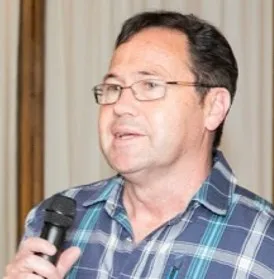
Nick Kim
Mass hysteria in New Zealand
Nick talked about when we went mad about meth testing.
He broke down how fear was used to build demand and then supply. Sadly, people’s lives were turned upside down when they were evicted, and in some cases lost all their belongings, due to the fear of contamination. There seemed to be a strong component of class-related blindness involved as well. It seemed many of the people being evicted were beneficiaries, and people wrongly put two and two together to come up with a victim blaming situation that it turned out was completely unwarranted.
So why else did we believe this narrative? We aren’t all beneficiary bashers, are we?! Nick talked of the clever marketing employed by the testers to ramp up fear, but also the total farce of it all, when you picture a sunny Tuesday morning, you are eating toast with the kids, when these guys in full hazmat suits turn up and swab a small area on the wall that was taped off like some creepy crime scene where Mr. Square had come to a sad end.
Nick spoke of the conflation of the accurate and the precise. Basically, testers were asking and answering the wrong question, that being, is there any meth at all, when the question should have been, is there a harmful level of meth? Unfortunately the media repeated the same narrative, exploited our fears, and did not ask enough questions, and skeptical voices were not heard.
The kicker of the talk was when a Fair-go show (where Nick himself was interviewed) concluded that there was enough meth on a five dollar note to create a positive meth result.
This made me reflect and remember those who lost large amounts of money needlessly trying to ‘fix’ the problem, while others made a mint buying up and selling on ‘meth contaminated’ homes, and think, wow, I’m glad that wasn’t me. But those we should really be focusing on are those innocent families made homeless because of this collective lack of critical thinking.
Recently the New Zealand Housing Authority has apologized and is organizing compensation for the people wrongly evicted from their homes, but some advocates for the families made homeless in this nightmare are asking is it all too little too late.
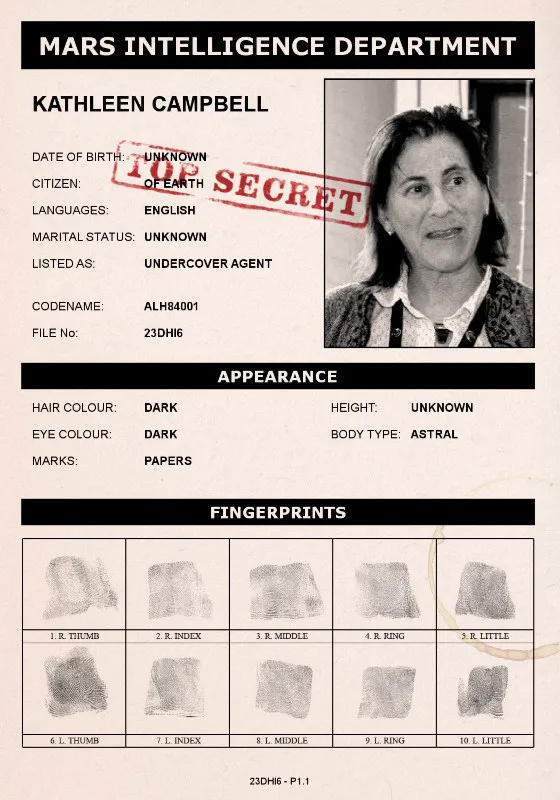
Kathleen Campbell
Skeptics are out there
Much of Kathleen’s talk was confidential and for conference attendees only. We could not film her talk due to its sensitive nature. This served to up the excitement. It’s tricky for me to relate too much here then for fear of stepping over the line, but I’ll try.
Kathleen was one of the scientists who got to pitch on where the next NASA probe to Mars should land. That right there is a pretty big deal, as millions of dollars and many a reputation depend on the decisions made in that endeavour and the outcomes. As an astrobiologist, Kathleen studies our Earth in order to work out where life might be found on Mars, so it was with that background and knowledge base that she made her suggestion to NASA.
She enthusiastically talked about her work looking at geothermal areas in New Zealand and Patagonia among other places, looking at various formations including those made by opaline silica that occur in hot pools over time, given the right conditions.
She brought up the fact that extremophiles had regularly been discovered in these environments, and that the environments were stable in temperature and a perfect nursery for life. These pools were not prone to dilution either, unlike the ocean which in comparison is a violent turbulent place. It’s not hard to see then why she supports the theory that life originated on land and then made its way to the oceans, rather than the other way round.
The astrobiology connection is then that these ideal nursery conditions, marked by certain crystalline patterns, seem to repeat themselves not only in different places around Earth, but also on Mars. This connection is made by examining certain photographs that were taken on previous missions. It can be surmised then that her choice of landing spot is connected with the crystal features common to our home here on Earth and the red planet.
We could not film Kathleen due to the sensitive nature of the talk. Image: c/o photofunia, photo by Rayna Ramsay
We can only speculate about Kathleen’s reaction to the news that the landing site chosen turned out to be the ‘vanilla ice-cream’ of choices. Check out www.space.com for more.
Space.com — Why NASA Chose a ‘Vanilla Ice Cream’ Landing Site on Mars for the InSight Lander https://tinyurl.com/skep125-7
This summary captures a flavour of some of the first speakers’ talks. Look out for more in later issues. Thanks again to all those who came from far and wide to attend the conference!
